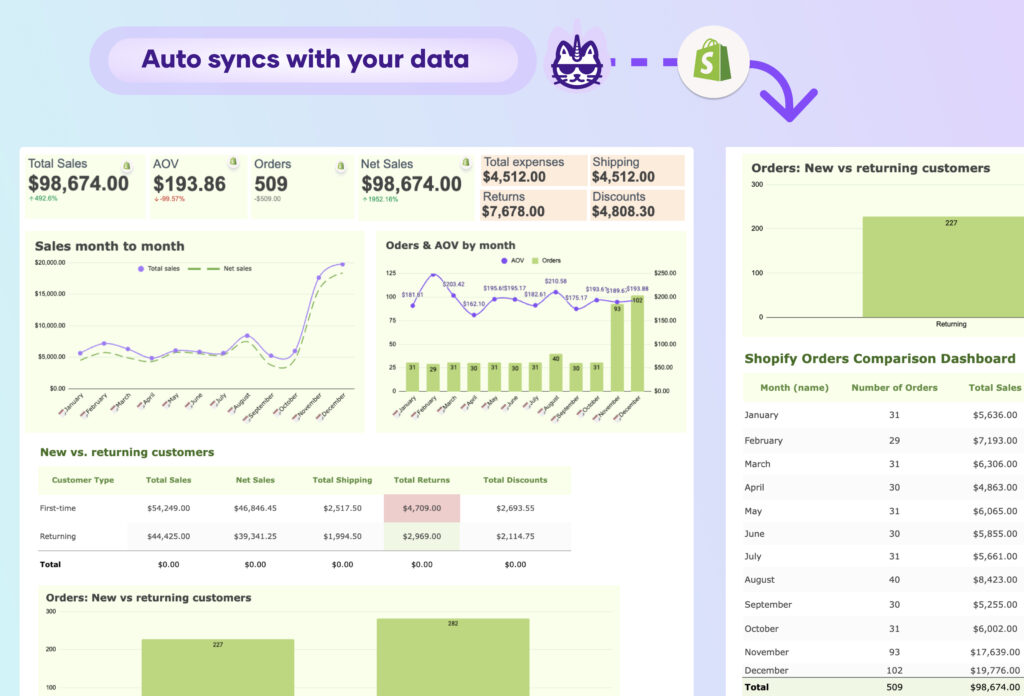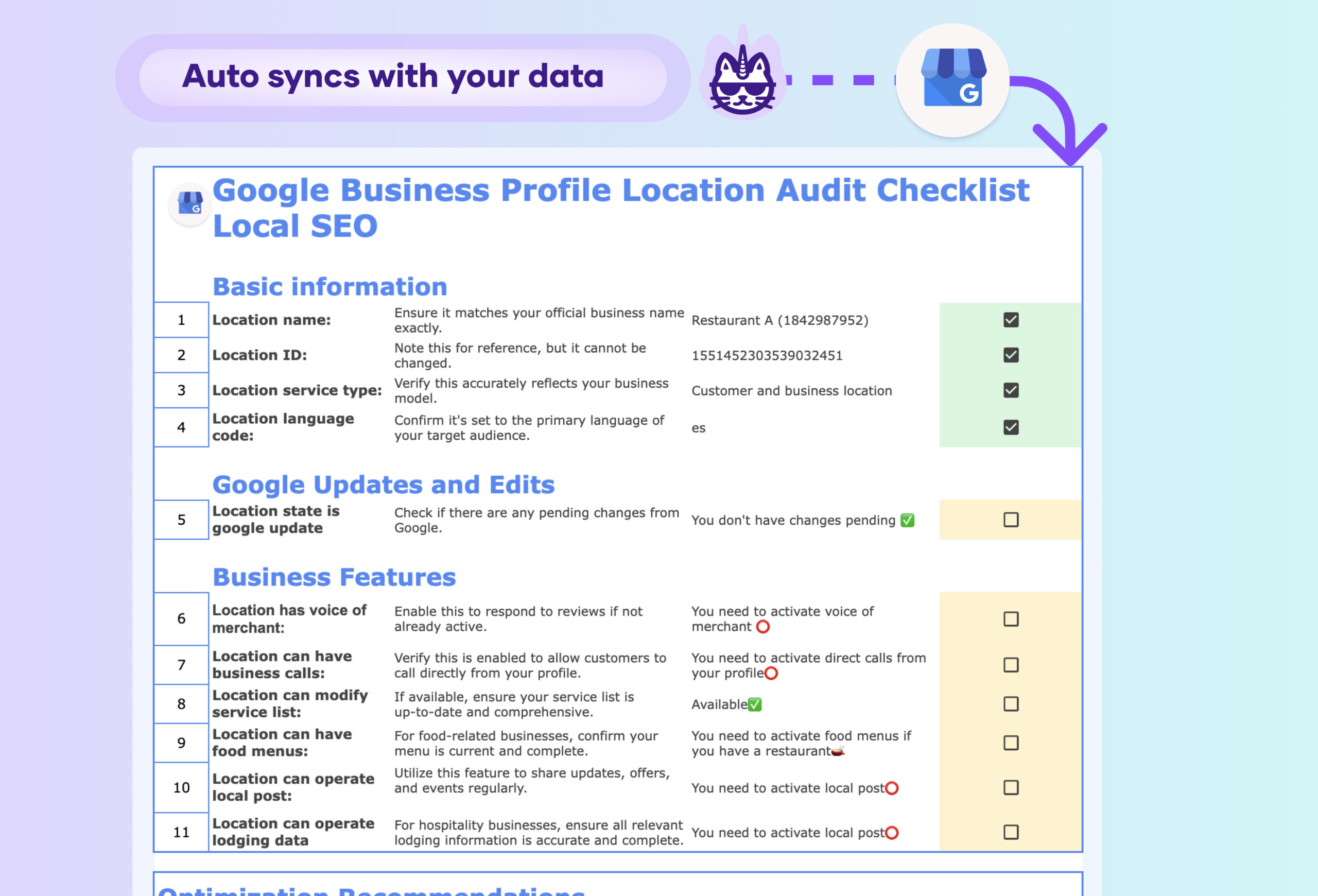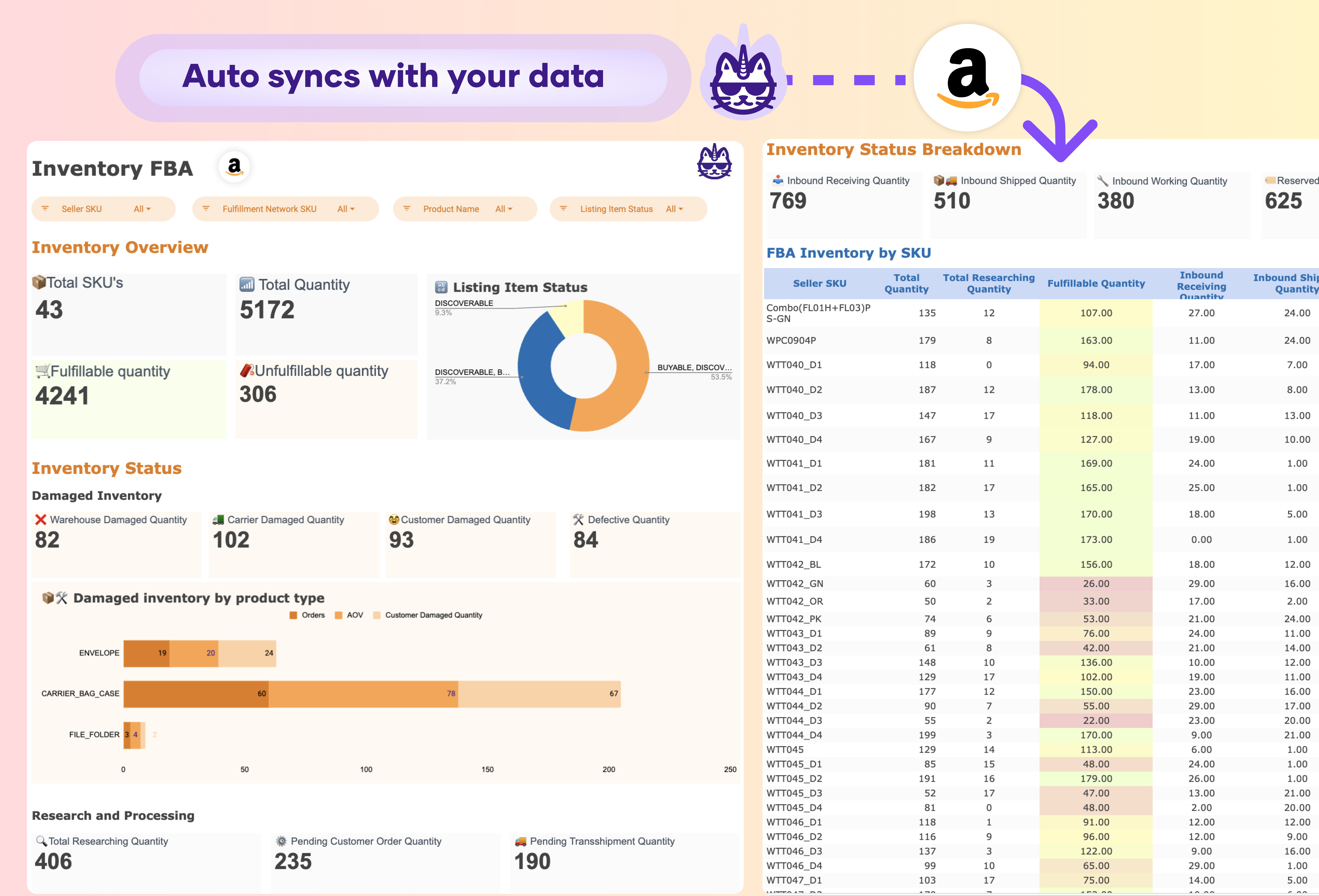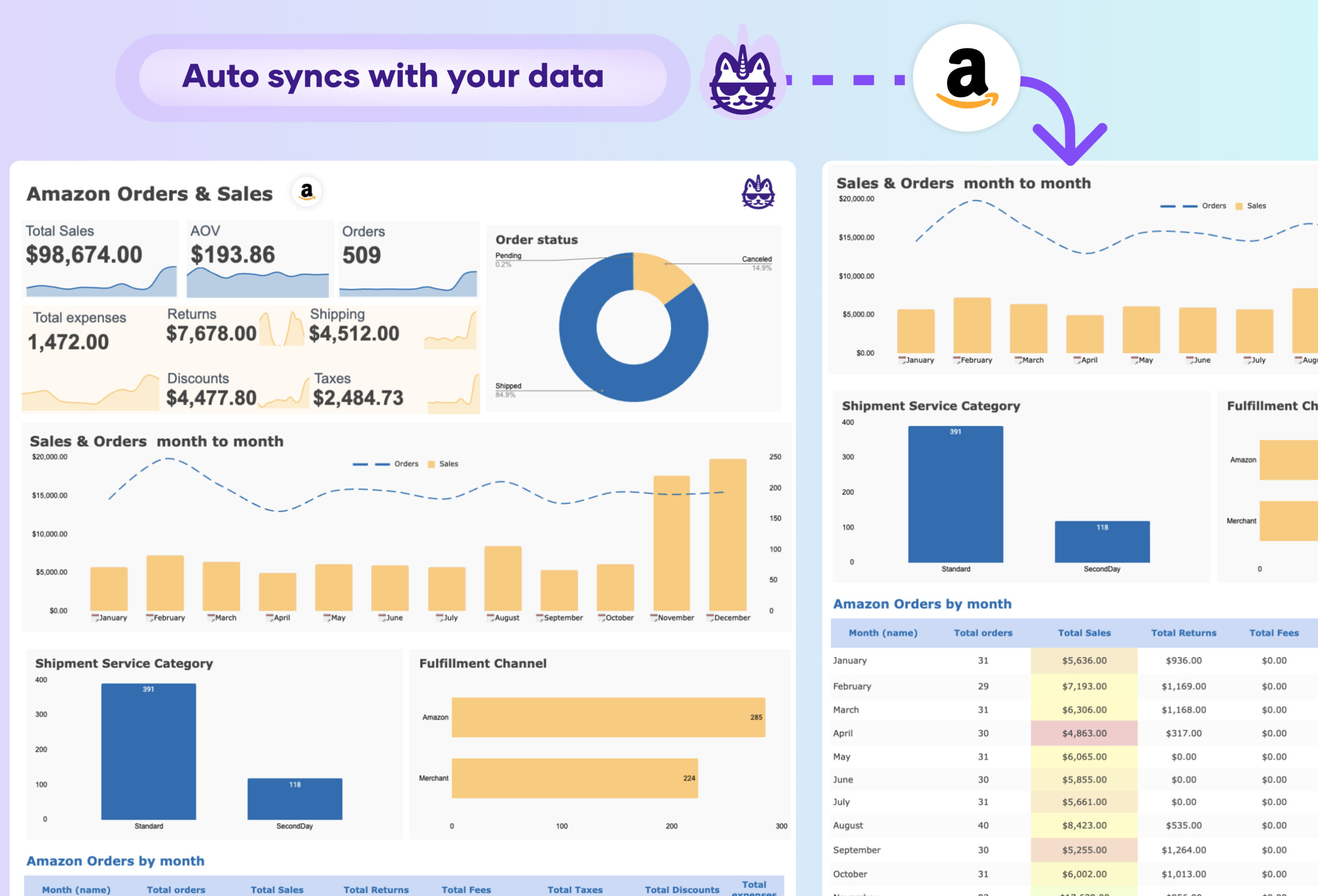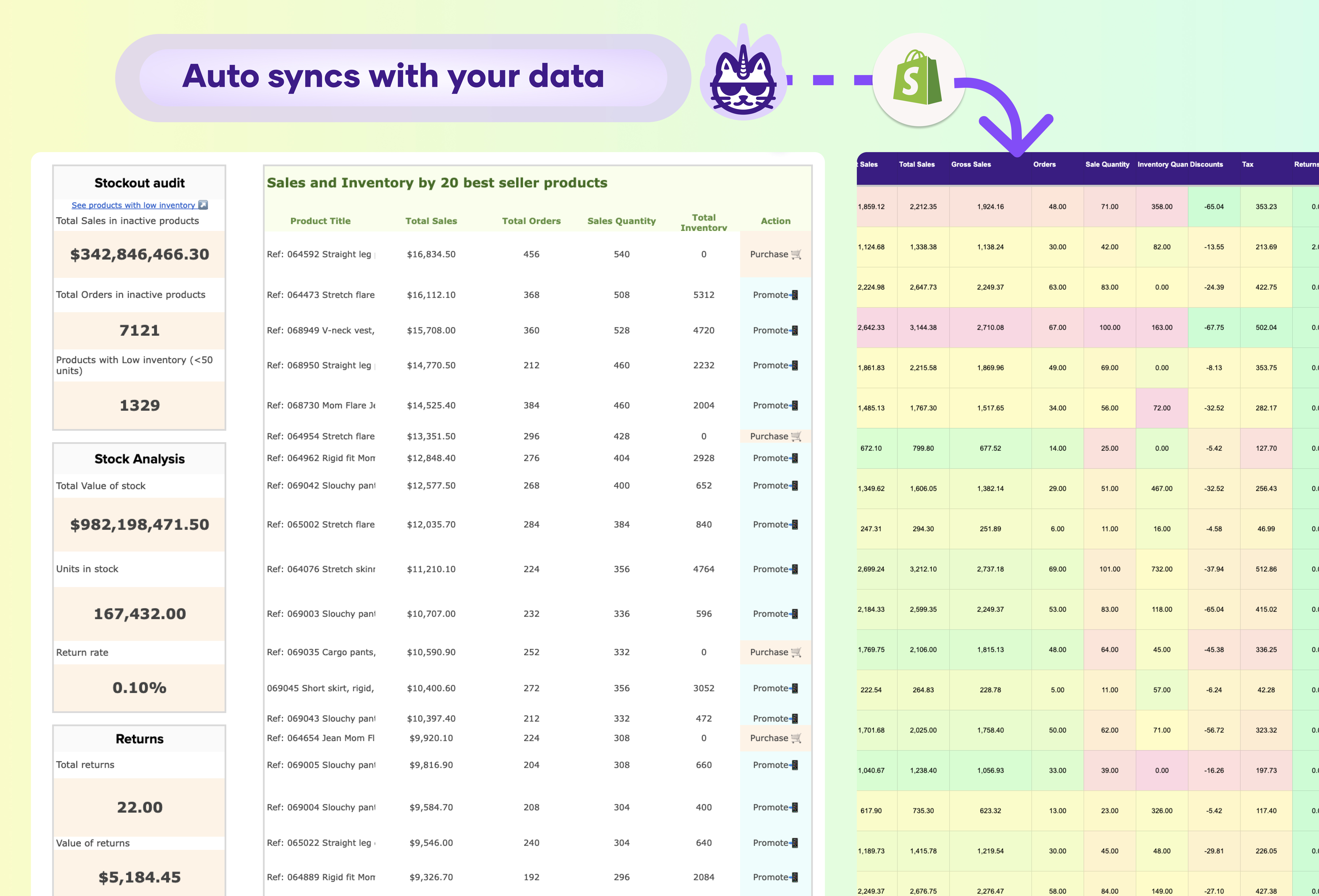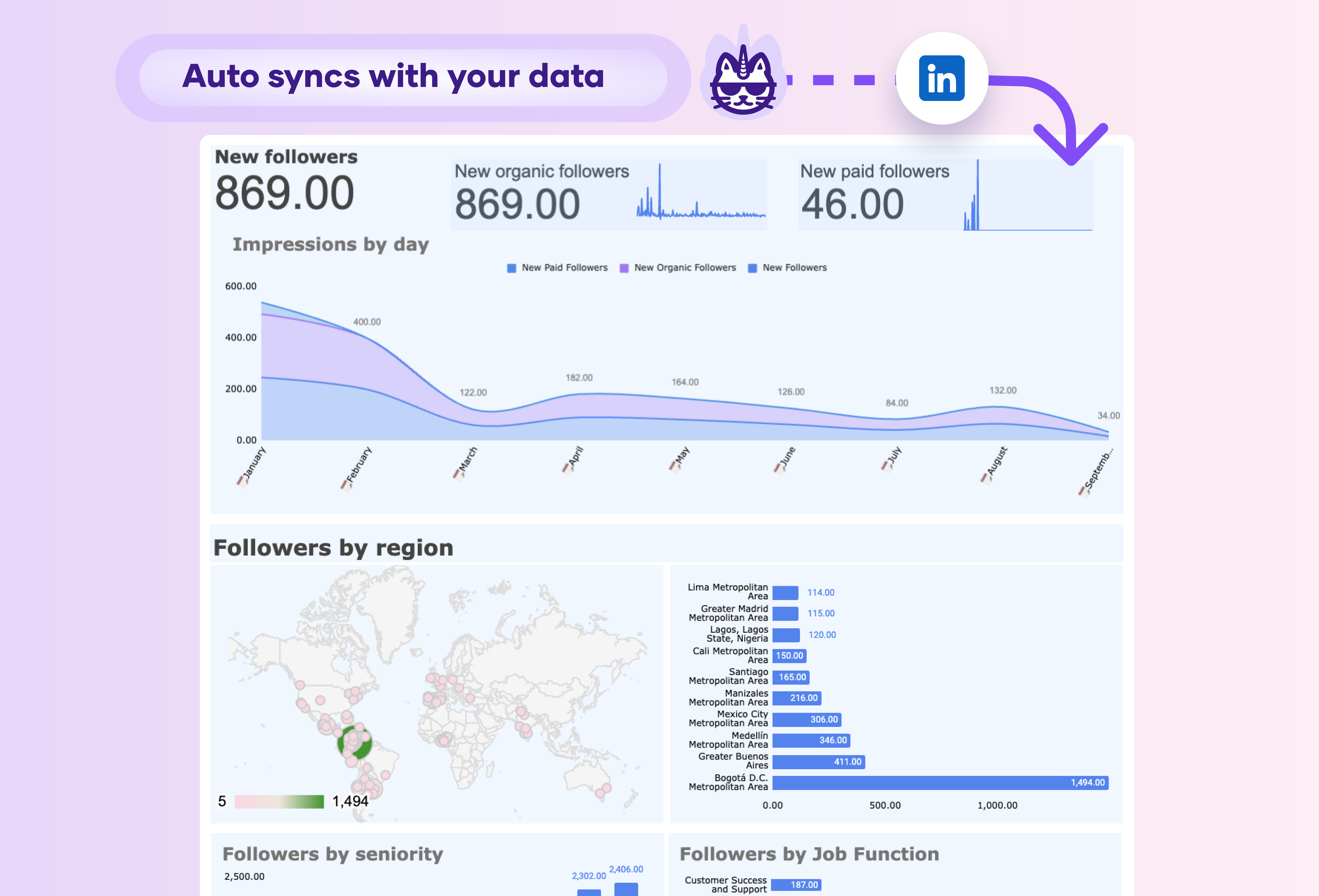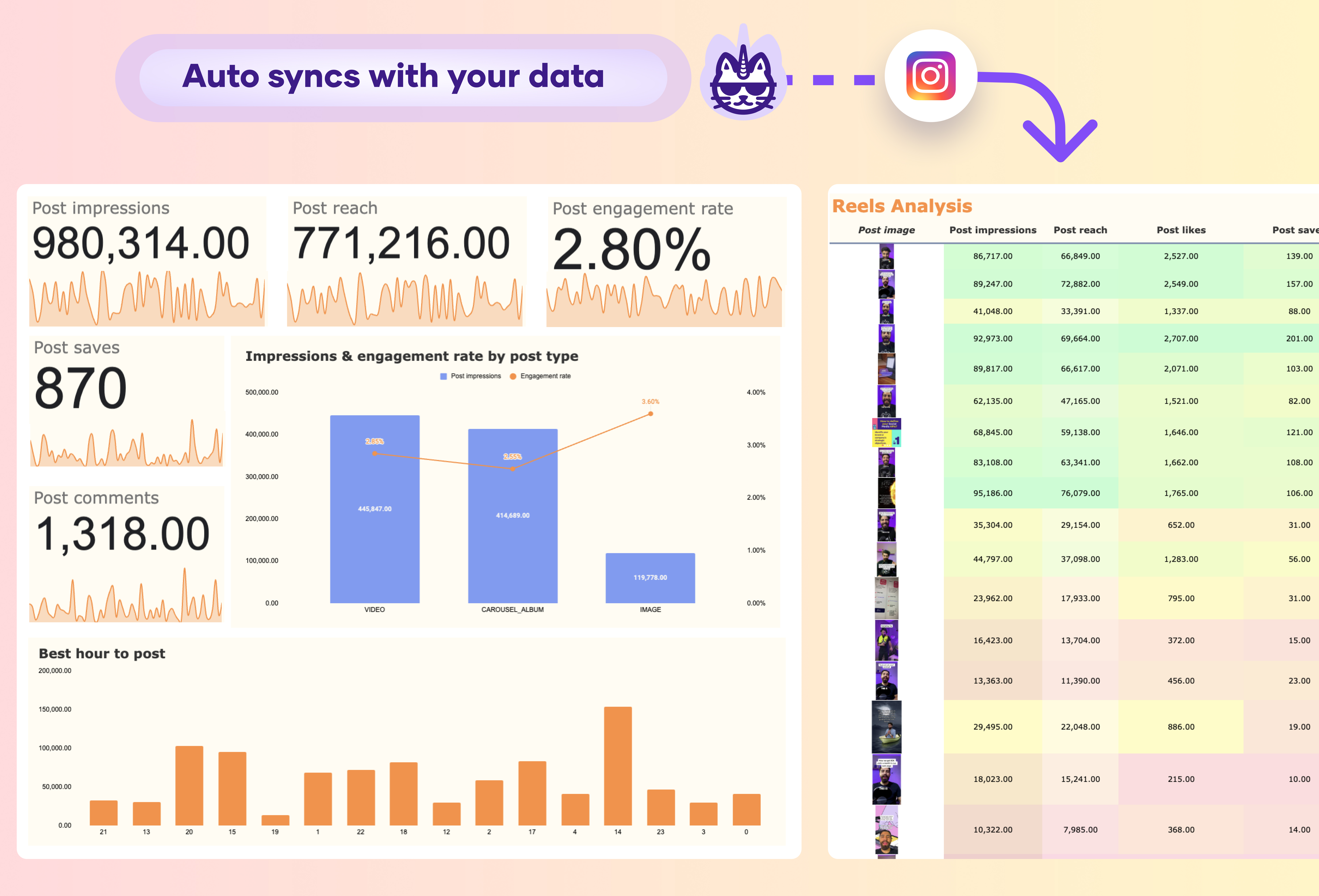A Shopify sales & orders dashboard report should include key metrics such as Total Sales, Net Sales, Orders, and Average Order Value (AOV) to provide a comprehensive view of store performance. Metrics like Sales by Customer Type (first-time vs. returning) and Orders by Source/Channel help in understanding customer behavior and identifying the most effective marketing channels. Including visualizations like sales trends and order volume by month can help track performance over time.
Additionally, the dashboard should feature metrics like Shipping Costs, Discounts, and Returns to offer insights into operational efficiency and profitability. These financial metrics, combined with sales and order data, provide a well-rounded understanding of store health, allowing for data-driven decisions to optimize revenue and reduce costs.
Also, include an auto-sync feature for real-time data updates from Shopify using Porter Metrics Google Sheets extension.

